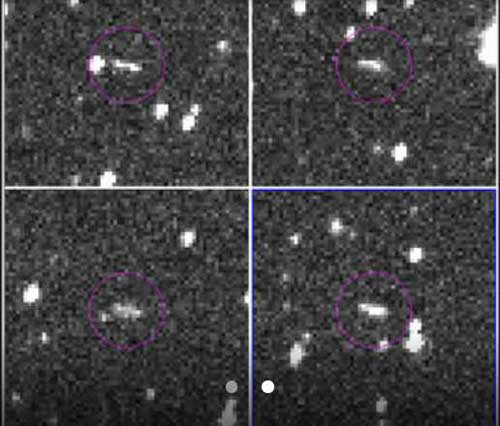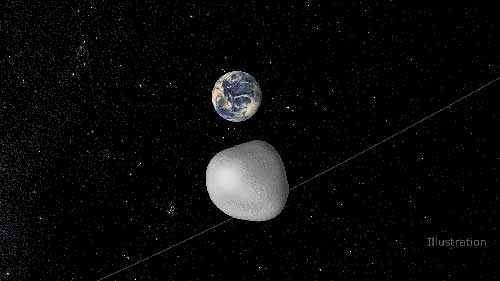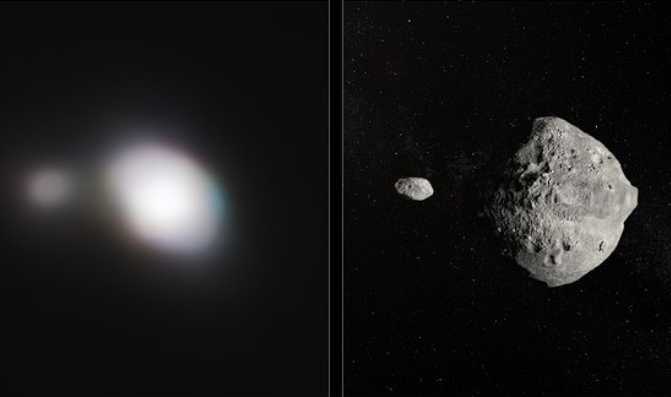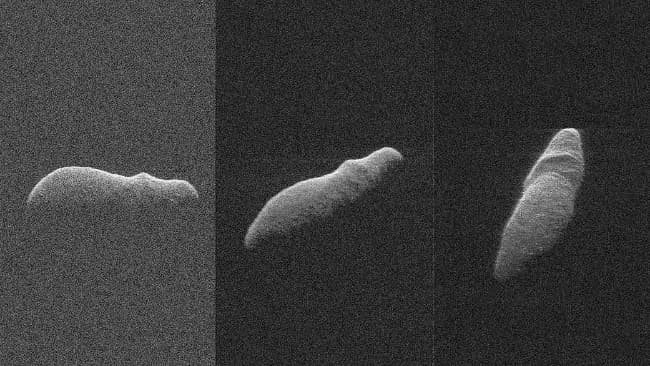
On Tuesday, March 8th, the earth will again experience the fly-by of 2013 TX68, a 100-foot in diameter asteroid discovered in 2013, when it passed by our planet that year.
Once again, that asteroid is expected to pass by earth safely without posing a threat. It is estimated to pass the planet at a distance of approximately 3 million miles. Although, there is a slight chance that it may pass by as close as 15,000 miles, but no closer.
Earlier estimates suggested that the fly-by would occur on March 5th, and pass the earth as close as 11,000 miles, but additional observations pinpointed the date and distance more accurately.
“We already knew this asteroid, 2013 TX68, would safely fly past Earth in early March, but this additional data allow us to get a better handle on its orbital path,” said Paul Chodas, manager of NASA’s Center for Near-Earth Object Studies (CNEOS) at the Jet Propulsion Laboratory in Pasadena, California. “The data indicate that this small asteroid will probably pass much farther away from Earth than previously thought.”
“There is no concern whatsoever regarding this asteroid – unless you were interested in seeing it with a telescope,” said Chodas. “Prospects for observing this asteroid, which were not very good to begin with, are now even worse because the asteroid is likely to be farther away, and therefore dimmer than previously believed.”[xyz-ihs snippet=”adsense-body-ad”]
2013 TX68 passed by our planet two years ago at a distance of 1.3 million miles, and will pass by once again in September 2017. During that 2017 pass, the odds of it impacting the planet are estimated at no more than 1-in-250 million. It was only observed for three days when it was discovered in the October 6th, 2013 night-time sky by NASA-funded Catalina Sky Survey, so scientists could not predict its precise orbit around the sun.
If the asteroid were to enter the earth’s atmosphere on one of its future passes by the planet, it is estimated that it would break up and produce an air burst roughly twice the size of the asteroid that broke up over Chelyabinsk, Russia three years ago. That asteroid is estimated to have been approximately 65-feet in diameter.
Beyond 2017, 2013 TX68 is estimated to do more distant passes in 2046 and 2097.[xyz-ihs snippet=”Adversal-468×60″]








